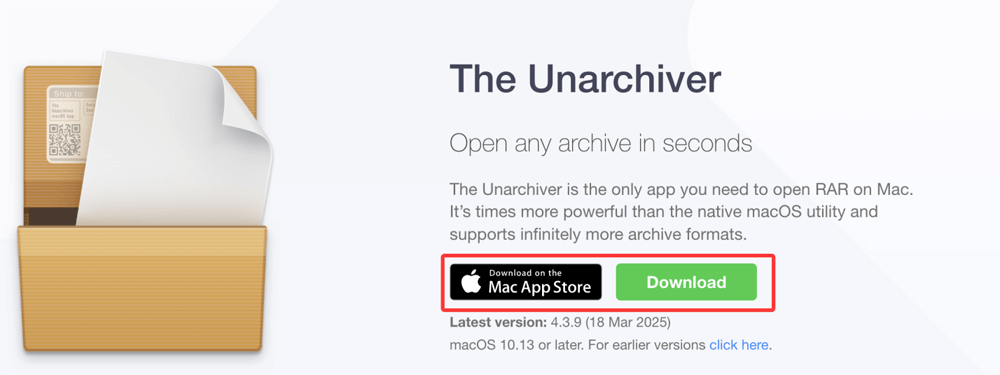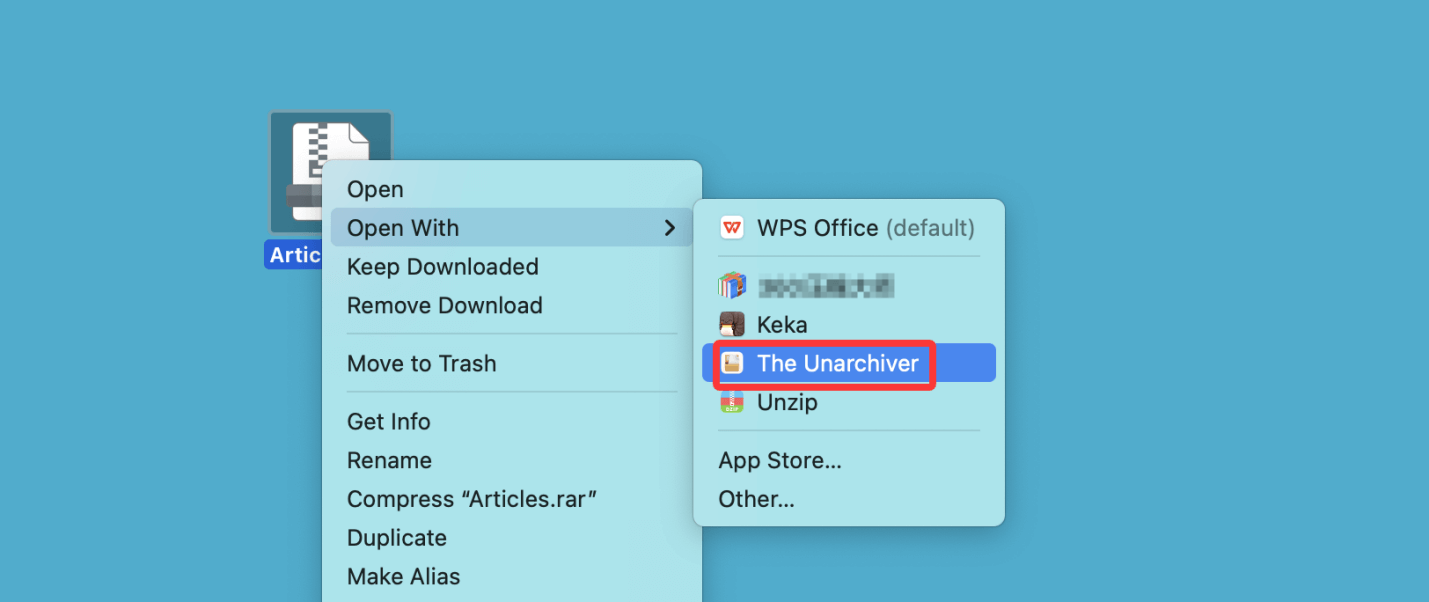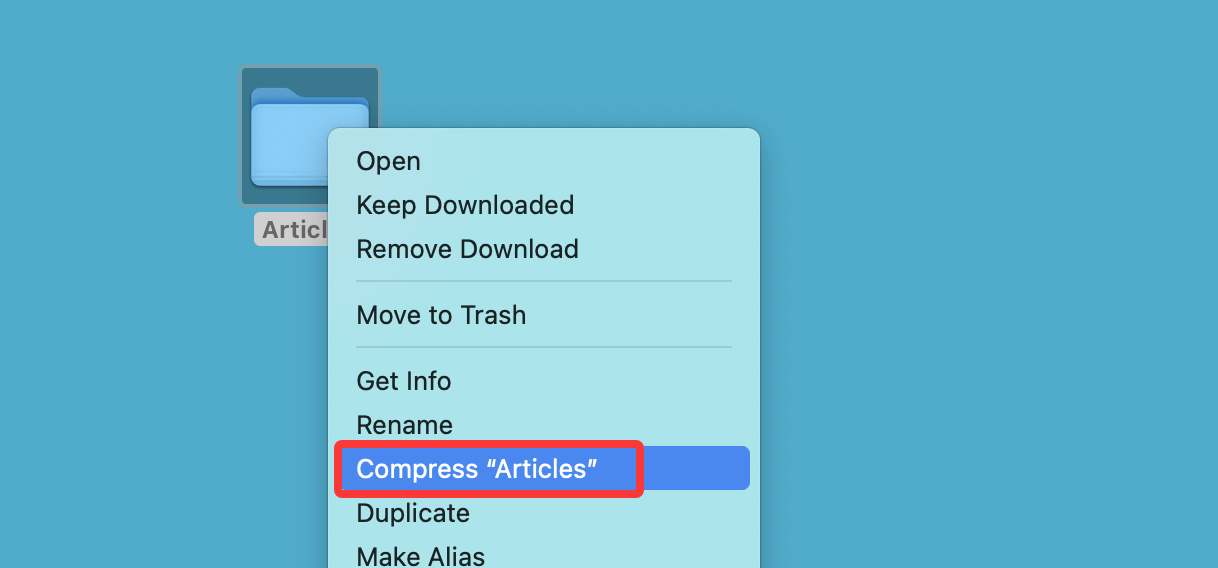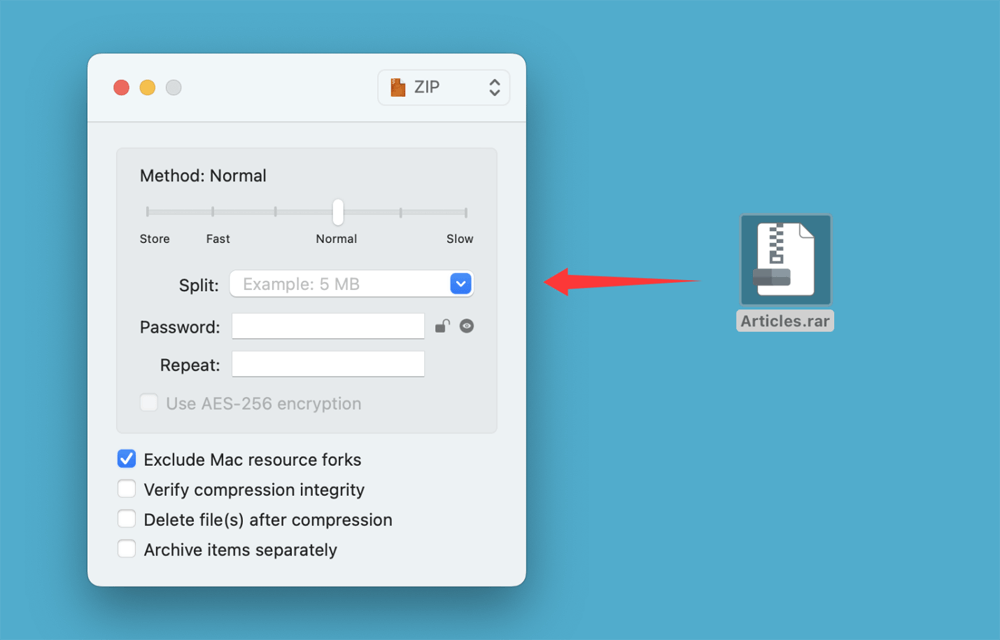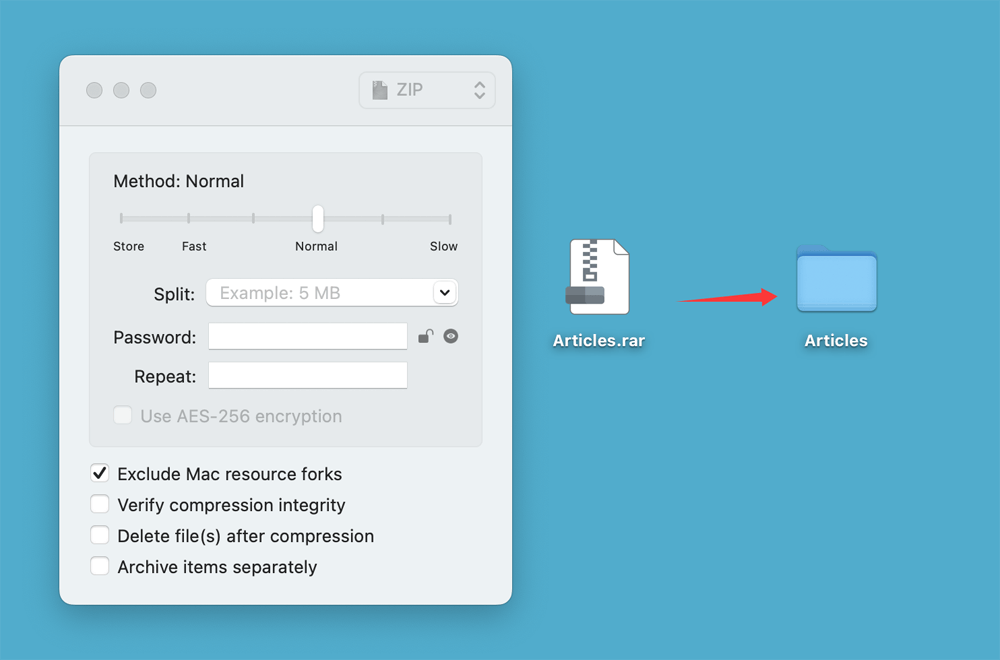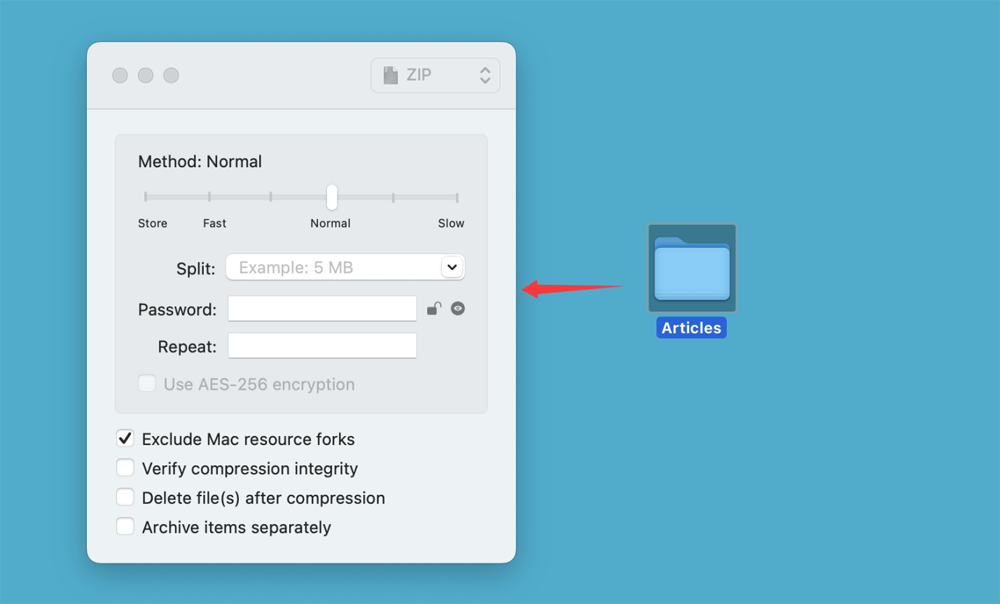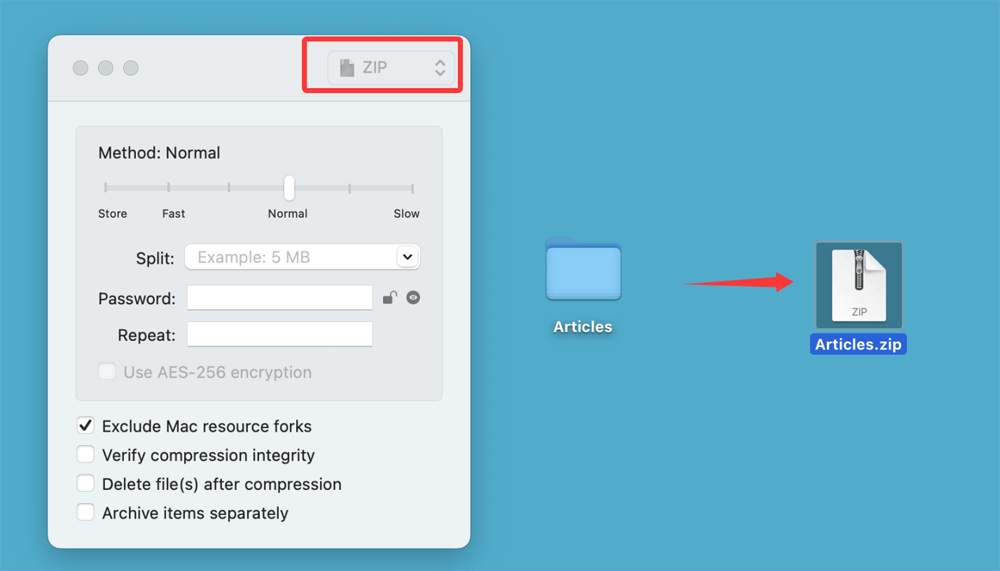PAGE CONTENT:
Whether you're organizing downloaded files or sharing data across devices and operating systems, using the right file format can make all the difference. While RAR files offer excellent compression, ZIP files are more universally compatible - especially with macOS. If you're wondering how to convert RAR to ZIP on a Mac, this comprehensive guide will walk you through several methods, tools, and best practices to ensure a smooth conversion process.
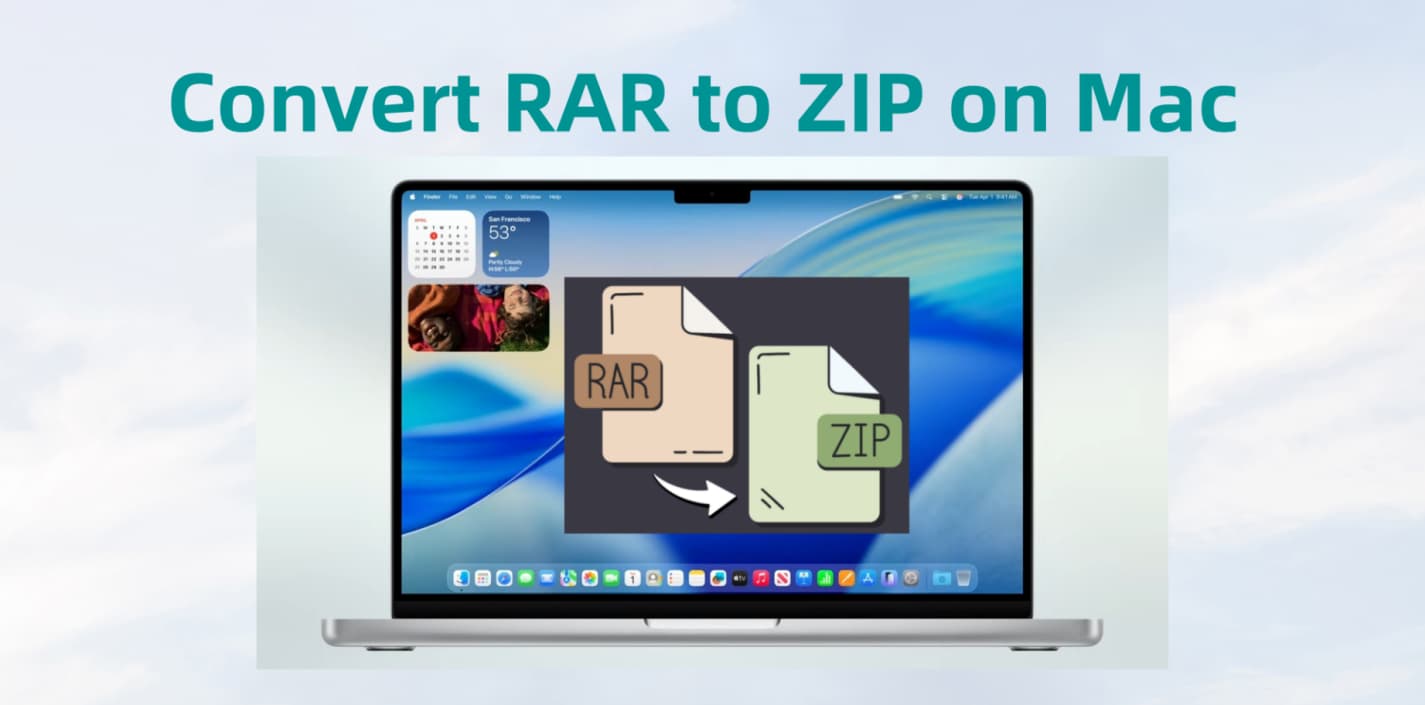
What Are RAR and ZIP Files?
Before diving into the conversion steps, it's important to understand what RAR and ZIP files are and why you might want to convert from one to the other.
◾RAR Files
RAR stands for Roshal Archive, named after its creator Eugene Roshal. RAR is a proprietary archive file format that supports data compression, error recovery, and file spanning. It's commonly used on Windows systems and by people who want to maximize compression.
◾ZIP Files
ZIP is one of the oldest and most widely supported archive formats. It is built into Windows, Linux, and macOS, making it the go-to format for compressing and sharing files across different platforms.
Why Convert RAR to ZIP on Mac?
- Compatibility: macOS doesn't support RAR files natively.
- Ease of Use: ZIP files can be opened with macOS's built-in Archive Utility.
- Portability: ZIP files are more compatible with cloud storage services and mobile devices.
- No Additional Software Needed: Once converted to ZIP, no extra tools are needed to open the file on most platforms.
Does macOS Support RAR to ZIP Conversion Natively?
Unfortunately, macOS doesn't include native support for RAR files. The built-in Archive Utility can only handle ZIP files and a few other formats - not RAR. This means you'll need third-party software or online services to extract RAR files before converting them to ZIP.
Let's explore several easy methods for doing this.
4 Methods to Convert RAR to ZIP on Mac
Method 1: Convert RAR to ZIP Using The Unarchiver + Finder Compression
Step 1: Download and Install The Unarchiver
The Unarchiver is a free, lightweight application that allows Mac users to extract RAR files.
- Visit the Mac App Store or The Unarchiver's website.
![Download and Install The Unarchiver]()
- Download and install the app.
- Open The Unarchiver and set RAR as an associated file format.
Step 2: Extract the RAR File
- Right-click the RAR file and choose "Open With" > "The Unarchiver".
![Extract the RAR File with The Unarchiver]()
- The file will be extracted into a folder in the same location.
![Extract the RAR File with The Unarchiver]()
Step 3: Compress to ZIP
- Right-click the newly extracted folder.
- Choose "Compress [Folder Name]".
![Compress to ZIP with The Unarchiver]()
- A ZIP file will be created in the same directory.
![Compress to ZIP with The Unarchiver]()
Pros
- Simple and free.
- No internet connection required.
Cons
- Requires two steps: extraction and compression.
Method 2: Convert RAR to ZIP Using Keka
Keka is another free compression and extraction tool that is macOS-friendly and supports both RAR and ZIP formats.
Step 1: Install Keka
- Download Keka from the official website or the Mac App Store.
![Install Keka]()
- Open and configure it for RAR extraction and ZIP compression.
Step 2: Extract the RAR File
- Drag and drop your RAR file onto Keka's window.
![Extract the RAR File with Keka]()
- The content will be extracted into a new folder.
![Extract the RAR File with Keka]()
Step 3: Compress to ZIP
- Drag the extracted folder into Keka again.
![Compress to ZIP with Keka]()
- Choose ZIP as the output format.
- A ZIP file will be generated.
![Compress to ZIP with Keka]()
Pros
- Intuitive interface.
- Supports encrypted archives.
Cons
- Slight learning curve for first-time users.
Method 3: Use Terminal for Manual Conversion (Advanced Users)
For those comfortable with macOS's command line, Terminal offers an efficient, no-frills way to extract and compress files.
Step 1: Install unrar and zip via Homebrew
If you haven't already, install Homebrew - the macOS package manager:
/bin/bash -c "$(curl -fsSL
https://raw.githubusercontent.com/Homebrew/install/HEAD/install.sh)"
Then, install unrar:
brew install unrar
Step 2: Extract the RAR File
Navigate to the directory containing your RAR file:
cd /path/to/your/rarfile
unrar x filename.rar
This will extract the contents into a new folder.
Step 3: Compress the Extracted Files to ZIP
Now compress the extracted content:
zip -r output.zip extracted_folder/
Pros
- Fast and efficient.
- Suitable for batch processing with scripts.
Cons
- Requires command-line knowledge.
- Mistakes can lead to data misplacement.
Method 4: Convert RAR to ZIP Using Online Tools
Online conversion tools are ideal for users who want a fast, hassle-free way to convert a RAR file to a ZIP file without downloading or installing software. These web-based platforms handle everything in your browser, making them perfect for one-off tasks or when using a public or work computer.
★ Why Choose an Online Converter?
Online converters are especially useful in the following scenarios:
- You only need to convert one or two RAR files occasionally.
- You're on a device where installing software isn't possible (e.g., a borrowed or shared Mac).
- You want a quick conversion without learning how to use a new app.
- You have a small file that doesn’t exceed upload limits.
That said, they are not ideal for sensitive, private, or very large files due to security and file size constraints.
★ Popular Online RAR to ZIP Converters
1. Zamzar
- Website: https://www.zamzar.com/convert/rar-to-zip/
- Offers file conversion without the need to create an account.
- Accepts files up to 50MB for free users.
- Converts via email if desired (useful if you want to retrieve the file later).
2. Convertio
- Website: https://convertio.co/rar-zip/
- Offers cloud-based conversion.
- Supports files up to 100MB for free.
- Offers Google Drive and Dropbox integration.
3. Online-Convert.com
- Website: https://archive.online-convert.com/convert-to-zip
- Allows additional settings like setting a compression level, changing file names, or adding passwords.
- Slightly more advanced but still user-friendly.
★ General Steps
- Visit the website.
- Upload your RAR file (drag and drop supported).
- Select ZIP as the output format.
- Click "Convert".
- Download the ZIP file once the process completes.
★ Tips for Using Online Tools Safely
- Check the Privacy Policy: Ensure the website deletes files after a set time.
- Use Password-Protected Networks: Avoid public Wi-Fi when uploading private files.
- Test with Non-Critical Files First: Get comfortable with the tool using harmless data.
- Avoid Auto-Downloads: Always manually click download to avoid malicious scripts.
Pros
- No installation needed.
- Can be used from any device.
Cons
- File size limitations (often 100–500MB).
- Privacy concerns with sensitive files.
- Internet connection required.
Best Practices for Converting RAR to ZIP on Mac
1. Verify File Integrity
After extracting or converting, always open the ZIP file to confirm that all data is intact and usable.
2. Maintain Folder Structure
Keep your files organized in folders before compressing them to ZIP to preserve their hierarchy.
3. Avoid Double Compression
Don't compress a ZIP file that already contains compressed files, as this can increase the file size instead of reducing it.
4. Use Password Protection If Needed
If your files are sensitive, use tools like Keka or Terminal to add password protection to your ZIP files.
Converting RAR to ZIP Troubleshooting Common Issues
◾"The File Can't Be Opened Because It's from an Unidentified Developer"
- Go to System Preferences > Security & Privacy > General.
- Click "Open Anyway" next to the app that was blocked.
◾Error Extracting RAR Files
- Ensure the RAR file is complete and not corrupted.
- Re-download the file if necessary.
- Use an alternative extraction tool like Keka if The Unarchiver fails.
◾Conversion Fails or Is Slow Online
- Check your internet speed.
- Try a smaller file or a different online converter.
- Use a desktop application for better performance.
◾Top Apps for Handling Archive Files on Mac
Here's a quick comparison of some top-rated tools for extracting and compressing files on macOS:
| App | RAR Support | ZIP Support | Cost | Notable Features |
|---|---|---|---|---|
| The Unarchiver | ✓ (extract) | ✗ (create) | Free | Lightweight and integrates with Finder |
| Keka | ✓ (extract) | ✓ (create) | Free | Password-protected archives, batch jobs |
| BetterZip | ✓ (full) | ✓ (full) | Paid | Preview files, edit without extracting |
| Archive Utility | ✗ | ✓ | Built-in | No installation required, simple usage |
FAQs About Converting RAR to ZIP on Mac
Yes, with tools like Keka and command-line scripts in Terminal, you can batch process several files.
Most tools require extraction before recompression. Some paid software might allow direct conversion, but it's uncommon and not recommended for preserving data integrity.
Yes. Most online converters limit file sizes between 100MB and 1GB for free accounts. Paid plans often increase this limit.
Conclusion
Converting RAR files to ZIP on a Mac is simple when you use the right tools. While macOS doesn't support RAR natively, third-party apps like The Unarchiver and Keka make it easy to extract RAR files. Once extracted, converting to ZIP is just a right-click away using Finder's built-in compression.
For users who prefer online solutions or want to batch convert files via the Terminal, there are options available for every level of technical comfort. Whether you're looking for simplicity, speed, or control, you now have multiple pathways to convert RAR to ZIP on your Mac.
Choose the method that fits your needs best - and make your file handling more efficient and universally compatible.
Related Articles
- Jul 20, 2024How to Repair Unreadable USB Flash Drive on Mac Without Losing Data?
- Oct 16, 2024How to Add or Remove Icons from Dock on Mac?
- Mar 06, 2025Repair an External Hard Drive with Terminal on Mac
- Aug 05, 2025Fix Error Code 36 on Mac: A Comprehensive Guide
- Jan 04, 2025How to fix fsck_msdos on Mac without Data Loss?
- Dec 09, 2024How to Add an External Hard Drive to Dock on Mac?

Charles
Charles, who lives in Sydney, Australia, is an editor & writer of Donemax Team. He is good at writing articles related with Apple Mac computers, Windows operating systems, data recovery, data erasure, disk clone and data backup, etc. He loves reading and playing tennis in his spare time and is interested in testing new digital devices such as mobile phones, Macs, HDDs, SSDs, digital cameras, etc.

Gerhard Chou
In order to effectively solve the problems for our customers, every article and troubleshooting solution published on our website has been strictly tested and practiced. Our editors love researching and using computers and testing software, and are willing to help computer users with their problems

